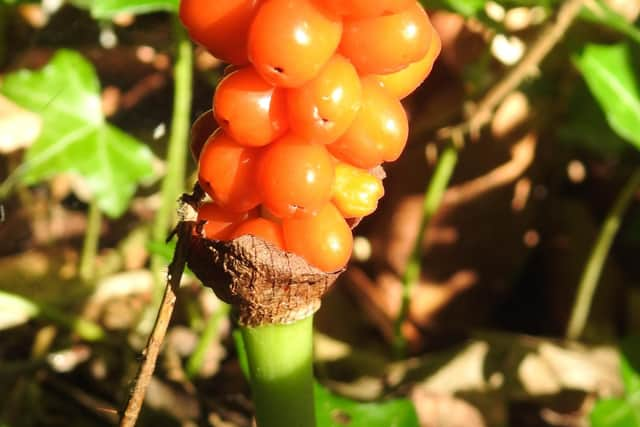On the Wildside: The mysterious deadly cuckoo pint


In the autumn, the lower ring of these flowers produces bright red berries. A second species, the Italian arum, is grown in gardens and sometimes establishes in the wild.
Gardeners sometimes cultivate the ‘dragon arum’ from Greece, but it smells strongly of putrid meat, a trick to attract huge numbers of flies which pollinate the tiny flowers. It also seems likely that insects attracted to arums don’t merely help with pollination, but some are perhaps trapped inside the spathe leaf structure and are digested to add nitrogen and other nutrients essential to the plant’s growth.
Advertisement
Hide AdAdvertisement
Hide AdThe peculiar, mysterious growth and behaviour of arums mean they feature strongly in folklore and folk memories, and general toxicity led to uses in herbal medical practice. For instance, extracts of arum were used to treat sore throats but also a fresh tincture of juice was mixed with lard to treat skin complaints such as ringworm. Apparently one of the wild arums in India had its roots used for an extract to poison tigers. Our native arum with its bright red berries has caused poisoning and even death in small children. It produces acrid juices only a drop of which causes a burning sensation in the mouth. The fresh leaves when bruised release highly toxic prussic acid and also chemicals called glucosides, but the pungent odour given off generally stops animals from browsing on them. It was believed that adders got their poison from eating the berries and hence they were called ‘snakes’ meat’.


With their suggestive shape and colour of the stalk with its bright red berries, they acquired rather rude folk-names and girls were told that even touching them could get them pregnant. Starch from the roots was valued for starching eighteenth-century ruffs but it burnt the hands of launderesses.
Professor Rotherham is contactable on [email protected]; follow Ian’s blog (https://ianswalkonthewildside.wordpress.com/